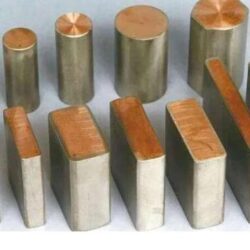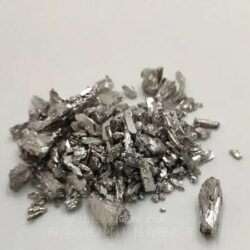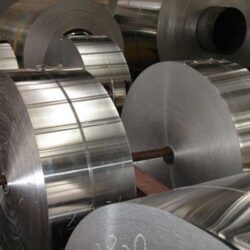Copper alloys are metal alloys that have copper as their principal component. They have high resistance against corrosion. The best known traditional types are bronze, where tin is a significant addition, and brass, using zinc instead. Both of these are imprecise terms, having both been commonly referred to as lattens in the past.
Copper’s performance can be expanded to suit many industrial applications and high tech products. This is achieved by the alloying process: to produce a solid material out of two or more different metals. By combining copper with other metals, a range of copper alloys can be made to fit almost any application.
For many applications, properties of copper can be readily customized. This is achieved by alloying: making a new metal out of two or more different metals. The most well-known copper alloy families are brass (copper-zinc), bronze (copper-tin) and copper-nickel. These actually represent families of alloys, all made by varying the amount of specific alloying elements. Alloys can be made to achieve certain colors, improve strength or corrosion resistance, improve forming or joining properties, or achieve any number of specific demands that the individual elements can’t achieve on their own. By combining copper with other metals and adjusting the percentages, alloys are made to fit almost any application.
Composition
The similarity in external appearance of the various alloys, along with the different combinations of elements used when making each alloy, can lead to confusion when categorizing the different compositions. There are as many as 400 different copper and copper alloy compositions loosely grouped into the categories: copper, high copper alloy, brasses, bronzes, copper nickels, copper–nickel–zinc (nickel silver), leaded copper, and special alloys. The following table lists the principal alloying element for four of the more common types used in modern industry, along with the name for each type. Historical types, such as those that characterize the Bronze Age, are vaguer as the mixtures were generally variable.
Brass is a copper alloy with zinc as the main additive, which has beautiful yellow color. Copper zinc binary alloy is called ordinary brass or simple brass. Ternary brass is called special brass or complex brass. Brass alloy containing less than 36% zinc is composed of solid solution and has good cold workability. For example, brass containing 30% zinc is often used to make cartridge case, commonly known as cartridge case brass or 73 brass. The brass alloy containing 36-42% zinc is composed of copper and solid solution, and the most commonly used one is 64 brass containing 40% zinc. In order to improve the properties of ordinary brass, other elements, such as aluminum, nickel, manganese, tin, silicon, lead, are often added. Aluminum can improve the strength, hardness and corrosion resistance of brass, but reduce the plasticity, so it is suitable for condensing pipes and other corrosion-resistant parts of seagoing ships. Tin can improve the strength of brass and corrosion resistance of seawater, so it is called Navy brass, which is used as ship thermal equipment and propeller. Lead can improve the cutting performance of brass; This kind of free cutting brass is often used as watch parts. Brass castings are often used to make valves and pipe fittings. The explosion-proof crescent wrench of fire hydrant commonly used in ships is made of brass and aluminum
Type
Cupronickel
Copper alloy with nickel as the main additive. Copper nickel binary alloy is called ordinary white copper; white copper alloy with manganese, iron, zinc, aluminum and other elements is called complex white copper. Industrial white copper can be divided into structural white copper and electrical white copper. The structural white copper is characterized by good mechanical properties, corrosion resistance and beautiful color. This kind of white copper is widely used in the manufacture of precision machinery, glasses accessories, chemical machinery and ship components. Electrical white copper generally has good thermoelectric properties. Manganin, constantan and Kaotong are white manganin copper with different manganese contents. They are used to manufacture precision electrical instruments, varistors, precision resistors, strain gauges and thermocouples.
brass
Brass is an alloy of copper and zinc. If only by copper, zinc brass is called ordinary brass. Brass is often used in the manufacture of valves, water pipes, connecting pipes of internal and external units of air conditioners and radiators.
If it is composed of more than two elements of a variety of alloys called special brass. For example, copper alloy composed of lead, tin, manganese, nickel, iron and silicon. Special brass is also called special brass. It has high strength, high hardness and strong chemical corrosion resistance. In addition, the mechanical properties of cutting are also prominent. Brass has strong wear resistance. The seamless copper tube drawn from brass is soft and has strong wear resistance. Brass seamless tube can be used in heat exchanger and condenser, cryogenic pipeline and submarine transportation pipe. Manufacturing sheet, bar, bar, pipe, casting parts, etc. The copper content is 62% ~ 68%. It has strong plasticity and can be used to manufacture pressure equipment.
According to the different kinds of alloy elements in brass, brass can be divided into ordinary brass and special brass. The brass used for pressure processing is called deformed brass. Brass is a copper alloy with zinc as the main additive, which has beautiful yellow color. Copper zinc binary alloy is called ordinary brass or simple brass. Ternary brass is called special brass or complex brass. Brass alloy containing less than 36% zinc is composed of solid solution and has good cold workability. For example, brass containing 30% zinc is often used to make cartridge case, commonly known as cartridge case
Shell brass or 73 brass. The brass alloy containing 36-42% zinc is composed of copper and solid solution, and the most commonly used one is 64 brass containing 40% zinc. In order to improve the properties of ordinary brass, other elements, such as aluminum, nickel, manganese, tin, silicon, lead, are often added. Aluminum can improve the strength, hardness and corrosion resistance of brass, but reduce the plasticity, so it is suitable for condensing pipes and other corrosion-resistant parts of seagoing ships. Tin can improve the strength of brass and corrosion resistance of seawater, so it is called Navy brass, which is used as ship thermal equipment and propeller. Lead can improve the machinability of brass; this kind of free cutting brass is often used as watch parts. Brass castings are often used to make valves and pipe fittings.
bronze
Bronze is the earliest alloy used in China, which has a history of more than 3000 years.
Bronze originally refers to copper tin alloy, and later all copper alloys except brass and white copper are called bronze, and often preceded by the name of the first major additive element. Tin bronze has good castability, antifriction and mechanical properties, and is suitable for manufacturing bearings, worm gears and gears. Lead bronze is widely used in modern engines and grinding machines. Aluminum bronze has high strength, good wear resistance and corrosion resistance. It is used for casting high load gears, shaft sleeves, marine propellers, etc. Phosphor bronze has high elastic limit and good conductivity. It is suitable for manufacturing precision springs and electrical contact elements. Beryllium bronze is also used to manufacture non sparking tools used in coal mines and oil depots. Beryllium copper is a supersaturated solid solution copper based alloy with good mechanical, physical, chemical and corrosion resistance; Tungsten copper is an ideal material for P / M production of mould made of tungsten steel, high carbon steel and high temperature resistant super hard alloy due to large loss of common electrode and slow speed. Bending strength ≥ 667mpa.
Pure copper
High quality red copper has high purity, fine structure and low oxygen content. No pores, trachoma, porosity, excellent conductivity, suitable for electric etching mold, after heat treatment process, electrode non directional, suitable for fine beating, fine beating.
Reference parameters: Cu ≥ 99.95% o < 003 conductivity ≥ 57ms / M hardness ≥ 85.2hv


